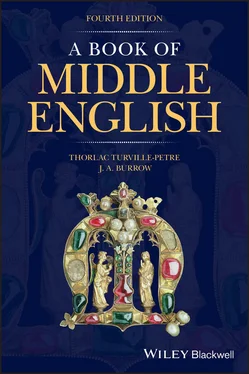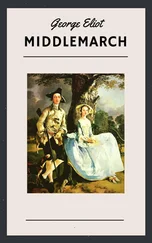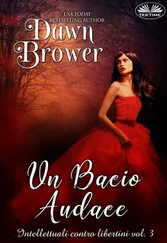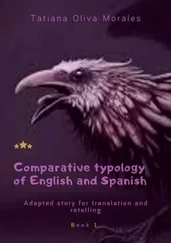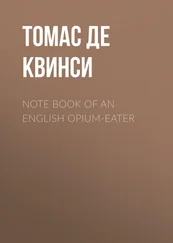In Modern English a reflexive pronoun is distinguished by the addition of ‐self : ‘the man hurt himself ’. In Middle English, on the other hand, self serves to reinforce the pronoun, so that Ywan, Uryn son, ette with hymselven , 9/113, means ‘ate with him’, not ‘ate by himself ’, and syre, now þouself jugge , 8/413, is ‘now, sir, you judge’, not ‘judge yourself ’. Particularly in early texts, self is simply added to the personal pronoun, as in þouself above, where it is subject. Later self is treated as a noun and accompanies the genitive pronoun, as in myselfe and my soule , 11/300, and þiself arte clensid , 6/15, though in the third person the masculine form remains himself and the plural hemselven : himself he lerned for to harp , ‘he himself learnt to harp’, 5/29.
Self is used in the same way to reinforce nouns: þe sulve mose , ‘the titmouse itself ’, 2/69, and (with the noun in the genitive) under Krystes selven , ‘under Christ himself ’, 9/51.
There is no distinctive reflexive pronoun in Middle English. The ordinary personal pronoun is used: ʒif ich me loki , ‘if I guard myself ’, 2/56; þe byschop hym shope , ‘the bishop got (himself ) ready’, 11/129. There is reciprocal use in we custe us , ‘we kissed one another’, 14j/46. The pronoun may be reinforced by the addition of self : if any so hardy … holdez hymselven , ‘if anyone thinks himself so brave’, 9/285.
Some verbs expressing fear, anger and the like, and many verbs of motion, are accompanied by a reflexive pronoun: thenne gan Wastor to wrath hym , ‘then Waster began to get angry’, 7b/149; he gooth hym , 18a/208. Even the verb ‘be’ may occasionally take a reflexive pronoun in Laʒamon: þene him wes Arður , ‘than Arthur was’, 3/29. On verbs of motion see 5.6.9.
Over most of the Middle English period the most common relative pronoun corresponding to Modern English ‘who’, ‘which’ and ‘that’ is þat , used to refer to both personal and non‐personal antecedents, singular and plural: King Pluto and … King Juno … þat sumtime were as godes yhold , ‘who were once regarded as gods’, 5/43–5.
In early texts þe and þa are also used. In Laʒamon’s Brut , þe tends to be used with reference to masculine singular antecedents, þa for plural and for feminine singular, and þat for inanimate or neuter singular: thus Hengest þe cnihten wes faʒerest , ‘Hengest who was most gracious of knights’, 3/168. Yet the distinction in usage is not clear‐cut; here þa is used to refer to a neuter noun: his spere … þa Ron wes ihaten , ‘his spear that was named Ron’, 3/24.
þat is regularly used as a relative without the antecedent noun or pronoun, when it is equivalent to modern ‘what’ or ‘he who’, ‘anyone who’ etc.: now þat London is nevenyd , ‘what is now called London’, 11/25; betere therby þat byleve the fynden , ‘benefit thereby those who provide you with food’, 7a/21; þe devel have þat reche , ‘the devil take anyone who bothers’, 7b/127. In the following example the reader may easily misinterpret þat , wrongly supposing that it is þe water that wants to escape: scopen out þe scaþel water þat fayn scape wolde , ‘those who were keen to escape scooped out the dangerous water’, 8/155.
In order to indicate case, þat is combined with a personal pronoun, so þat … his means ‘whose’: þat merkid is in oure martilage his mynde , ‘whose memory is set down in our burial‐register’, 11/154. þat may refer back to a genitive pronoun rather than its noun, in this instance his rather than bour : þer watz bylded his bour þat wyl no bale suffer , ‘there was built the bower of the man who will suffer no harm’, 8/276.
In later Middle English which becomes increasingly common as an alternative to þat , for both persons and things: sche which kepþ þe blinde whel , 13/92. Which , ‘who’, is accompanied by þat as a conjunction in This abbot, which þat , 18b/190. The combination þe which was favoured by some writers: o principal worching miʒt þe whiche is clepid a knowable miʒt , 6/63–4.
There is sometimes no relative pronoun at all. The ‘zero’ relative pronoun is used in Modern English as the object of the clause: ‘the woman (whom) I saw’. In Middle English it is also used when it is subject: fro bale has broʒt us , ‘who has brought us from anguish’, 11/340; for hym þe boght , ‘for him who redeemed you’, 15/101.
Usage of the definite article is variable when proper names are accompanied by a noun. Expressions such as þe king Stephne , 1/1, are commoner in early use, and later it is Kyng Charles , 12/114; similarly Seint Jerom , 12/92, and even segge Jonas , ‘the man Jonah’, 8/409. When the noun follows the name there need be no article, especially in early texts: Martin abbot , 1/56, but Arðure þan kinge , 3/1, and Peres þe plouhman , 7b/124.
Both the definite and indefinite articles may be absent where Modern English would use them: which bar corone , ‘who was king’, 13/63; have an horn and be hayward , 7a/16; wæs god munec and god man , 1/72.
The adjectives ech and every may be followed by a : everich a grot , ‘every detail’, 5/490.
5.5 Adjectives and Adverbs
5.5.1 Position
Attributive adjectives most commonly precede the noun: not by soche a devoute and a meek blynde stering of love, bot by a proude, coryous and an ymaginatiif witte , 6/145–7. In verse they may follow the noun: sceld deore , ‘beloved shield’, 3/20; burn rych , ‘noble man’, 9/20. Two or more adjectives may be grouped around the noun: pore folke syke , 7b/147; wylde werbles and wyʒt , ‘wild and loud trillings’, 9/119; he milde man was and softe and god , 1/9–10. In Laʒamon’s Brut the adjective sometimes precedes the article or possessive pronoun: balde mine beornes , ‘my bold knights’, 3/133, mid aðelen his crafte , ‘with his excellent skill’, 3/11. Compare Shakespeare’s dear my lord .
5.5.2 Comparatives and Superlatives
Comparative and superlative adjectives and adverbs are formed by adding the endings ‐er and ‐est ; see 4.4.3–4. The use of more and most is not so common and, in contrast to modern usage, is found chiefly with short adjectives: most kyd , 9/51. Even with an adverb such as wiseli , the comparative is wiselier , 15/38. Double comparison, with both more and the suffix ‐er , is seen in more wighter , ‘stronger’, 15/201.
Superlatives may be intensified in various ways: by adding the prefix alder‐ (from OE alra , ‘of all’): alder‐grattyst , ‘greatest of all’, 11/5; by a following phrase such as of all oþer ; or by the expression one þe before the superlative: on þe most , ‘the very biggest’, 9/137; one þe unhapnest hathel , ‘quite the most unfortunate man’, 11/198. This last construction may easily be wrongly identified with the modern ‘one of the most …’.
Читать дальше
